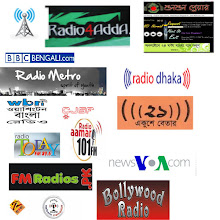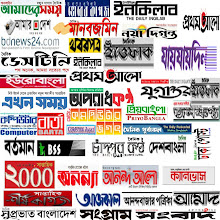 T-shirts were originally worn as undershirts. Now T-shirts are worn frequently as the only piece of clothing on the top half of the body, other than possibly a bra or an undershirt (vest). T-shirts have also become a medium for self-expression and advertising, with any imaginable combination of words, art and even photographs on display.[1]
T-shirts were originally worn as undershirts. Now T-shirts are worn frequently as the only piece of clothing on the top half of the body, other than possibly a bra or an undershirt (vest). T-shirts have also become a medium for self-expression and advertising, with any imaginable combination of words, art and even photographs on display.[1]

A T-shirt typically extends to the waist. Variants of the T-shirt, like the tank top, A-shirt (with the nickname "wife beater"), muscle shirt, scoop neck, and the V-neck have been developed. Hip hop fashion calls for "tall-T" T-shirts which may extend down to the knees. A 1990s trend in women's clothing involved tight-fitting "cropped" T-shirts that are short enough to reveal the midriff. Another popular trend is wearing a "long-sleeved T-shirt", then putting a short-sleeved T-shirt of a different color over the long-sleeved shirt; this is known as "layering".
Decoration
In the early 1950s several companies based in Miami, Florida, started to decorate T-shirts with different resort names and various characters. The first company was Tropix Togs, under founder Sam Kantor, in Miami. They were the original licensce for Walt Disney characters that included Mickey Mouse and Davy Crockett. Later other companies expanded into the T-shirt printing business that included Sherry Manufacturing Company also based in Miami. Sherry started in 1948 by its owner and founder Quinton Sandler as a screen print scarf business and evolved into one of the largest screen printed resort and licensed apparel companies in the United States.
In 1959, plastisol, a more durable and stretchable ink, was invented, allowing much more variety in T-shirt designs.
In the 1960s, the ringer T-shirt appeared and became a staple fashion for youth and rock-n-rollers. The decade also saw the emergence of tie-dyeing and screen-printing on the basic T-shirt. In the late 1960s Richard Ellman, Robert Tree, Bill Kelly, and Stanley Mouse set up the Monster Company in Mill Valley, California, to produce fine art designs expressly for T-shirts. Monster T-shirts often feature emblems and motifs associated with the Grateful Dead and marijuana culture.[2]
The most common form of commercial T-shirt decoration is screen-printing. In screen-printing, a design is separated into individual colors. Plastisol or water based inks are applied to the shirt through mesh screens which limits the areas where ink is deposited. In most commercial T-shirt printing, the specific colors in the design are used. To achieve a wider color spectrum with a limited number of colors, process printing (using only cyan, magenta, yellow and black ink) or simulated process (using only white, black, red, green, blue, and gold ink) is effective. Process printing is best suited for light colored shirts. Simulated process is best suited for dark colored shirts. Very few companies continue to use water-based inks on their shirts. The majority of other companies that create shirts prefer to use plastisol due to the ability to print on varying colors without the need for color adjustment at the art level.
Specialty inks trend in and out of fashion and include; shimmer, puff, discharge and chino based inks. A metallic foil can be heat pressed and stamped onto any plastisol ink. When combined with shimmer ink, metallics give a mirror like effect wherever the previously screened plastisol ink was applied. Specialty inks are more expensive to purchase as well as screen and tend to appear on garments in boutiques.
Other methods of decoration used on T-shirts include airbrush, applique, embroidery, impressing or embossing and the ironing on of either flock lettering, heat transfers, or dye-sublimation transfers. Laser printers are capable of printing on plain paper using a special toner containing sublimation dyes which can then be permanently heat-transferred to T-shirts.
In the 1980s, thermochromatic dyes were used to produce T-shirts that changed colour when subjected to heat. This brand of T-shirt, Global Hypercolour, was a common sight on the streets of the UK for a few years, but has since mostly disappeared. These were very popular in the United States as well in the late 80's among teens. A downside of color-change garments is that the dyes can easily be damaged, especially by washing in warm water, or dye other clothes during washing.
At the turn of the century, designing custom T-shirts online became more popular. Popular websites began to use digital printing (such as Direct to Garment or DTG printing) to allow customers to design their own T-shirts online with no minimum orders. In the beginning, DTG could not print well on dark garments; however, with the help of some online T-Shirt retailers, printer manufacturers such as T-Jet have all but perfected the process, providing consumers with many more printing options[3]

Expressive messages
Throughout the 1980s and ever since, T-shirts have flourished as a personal expression.[4]
Since the late 1980s and especially the 1990s, T-shirts with prominent designer-name logos have become popular, especially with teenagers and young adults. These garments allow consumers to flaunt their taste for designer brands in an inexpensive way, in addition to being decorative. Examples of designer T-shirt branding include Calvin Klein, FUBU, Ralph Lauren and The Gap. These examples also include representations of rock bands, among other obscure pop-culture references
Screen printed T-shirts have been a standard form of product advertising for major consumer products, such as Coca-cola and Mickey Mouse, since the 1970s. However, since the 1990s, it has become common practice for companies of all sizes to produce T-shirts with their corporate logos or messages as part of their overall advertising campaigns.
The early 2000s saw the renewed popularity of T-shirts with slogans and designs with a strong inclination to the humorous and/or ironic. The trend has only increased later in this decade; embraced by celebrities, such as Britney Spears and Paris Hilton, and reflected back on them, too ('Team Aniston').[citation needed]
The political and social statements that T-shirts often display have become, since the 2000s, one of the reasons that they have so deeply permeated different levels of culture and society.[citation needed] The statements also may be found to be offensive, shocking or pornographic to some. Many different organizations have caught on to the statement-making trend, including chain and independent stores, websites, and schools.
A popular phrase on the front of T-shirts demonstrating T-shirts' popularity among tourists is the humorous phrase "I did _____ and all I got was this lousy T-shirt." Examples include "I needlessly edited Wikipedia and all I got was this lousy T-shirt." and "My parents went to Las Vegas and all I got was this lousy T-shirt."
T-shirt exchange is an activity where people trade their T-shirts they are wearing. Some designs specifically write on the shirt "trade with me".
Environmental impact
A life cycle study of one T-shirt brand shows that the CO2 emissions from a T-shirt is about 4 kilograms (8.8 pounds) -- including the growing of the cotton, manufacturing and wholesale distribution.[5] The loss of natural habitat potential from the T-shirt is estimated to be 10.8 square meters (116 square feet).[6]




















2 comments:
Discover online the sporty and fashionably designed Gaastra t-shirts for
men in various colours made from top-quality and hard-wearing cotton.
Stylist T-Shirt Shop
all of the t-shirts are good looking and unique.great post to share. thanks for the post.
t shirts in bangladesh
Post a Comment